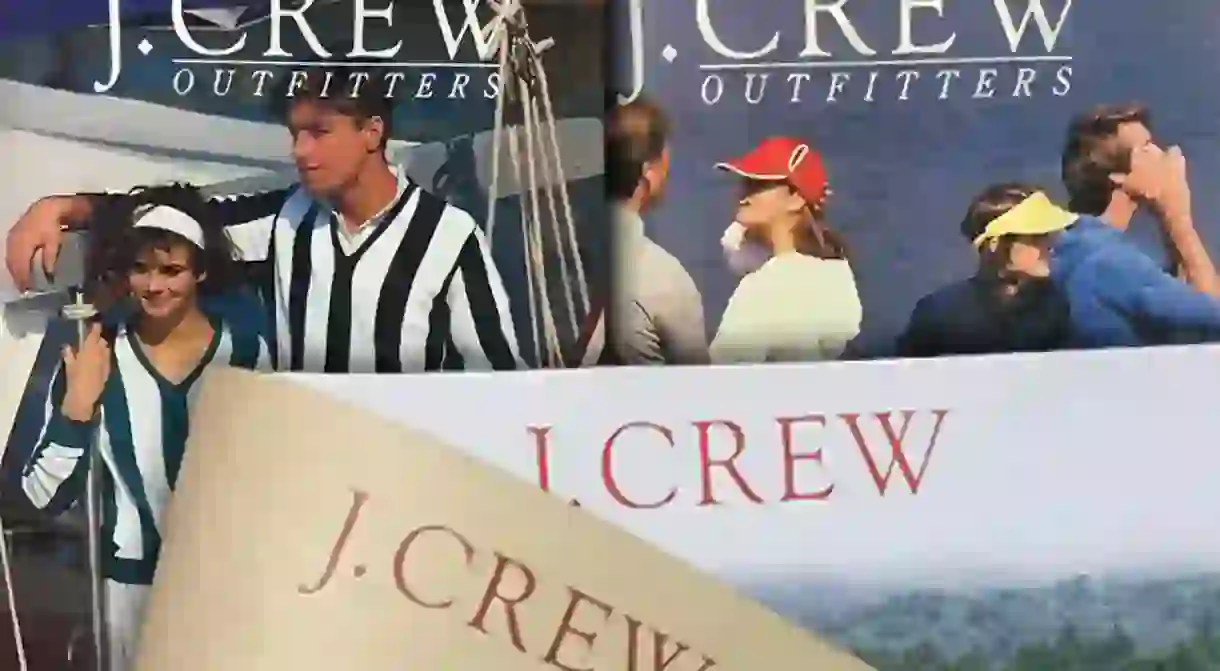'90s Nostalgia, Prep School Chic, and the J.Crew Catalogue

There was a time before every sartorial impulse, every pang of longing for that dope jacket you clocked on the G train could be satisfied with a quick Google search and an “add to cart.” There was a time when iconic pieces defined a lifestyle moment for more than one season, when our tastes (and our entire lives really) were less disposable, less dictated by the ceaseless, overwhelming influx of images that leave us always wanting more, new, different. There was a time when you lived for the arrival of the new J. Crew catalogue.

If you were a teenager in the mid-1990s, the pages of that catalogue were ripe for fantasy about life lived on the wind-swept shores of east-coast beach towns. Endless clambakes, afternoons horseback riding through wildflower-dotted fields followed by lying in the grass with an impossibly handsome hunk in an unbuttoned chambray work shirt. Those pages played that oh-so-addicting dual role of presenting an unattainable yet covetable life where everyone is gorgeous and smiling like a golden retriever and giving us a way to get it: Just fill out the order form, ask your mom for her credit card and call the 800 number.
The Barn Jacket. The Anorak. The Roll-Top French Bikini Bottom. Hell, every single one of their swimsuits. The Roll-Neck Wool Sweater. Even that Chambray Work Shirt itself. Each of these perennial favorites that barely changed season after season, year after year. All of them, symbols of the effortless, classic American Good Life J. Crew came to represent as a brand.
So what exactly was it about those clothes that made them and the pages of the catalogue they graced so enticing?

The Barn Jacket. This jacket was not overtly cool. Your mom or even your grandma might’ve worn one. But somehow its slouchy fit and warm plaid flannel lining made you feel like you should be wandering down a rainy beach path at dusk with a flashlight and a copy of ‘The Catcher in the Rye’ burning a hole in one of those wonderful oversized patch pockets.
The Anorak. The bold, utilitarian look of this pullover jacket made it possible to feel sporty without seeming like a jock. It was the kind of jacket you might’ve borrowed from that impossibly attractive hunk in the chambray work shirt one night down by the lake when he noticed your goosebumps in the brisk late summer air.
The Chambray Work Shirt. Speaking of that hot dude down by the lake… Now, J. Crew certainly didn’t invent this wardrobe staple, but they made theirs first-in-class with a soft, worn-in feel and smart tailoring that was equal parts feminine and masculine and made us look effortlessly chic.
The French Roll-Top Bikini Bottom. I mean, wow. Had we only had the foresight to realize what a powerful piece this was at the time, we would have hoarded half a dozen for later in life. Sexy, provocative, versatile. Roll it up into a high cut bikini. Roll it down into a minx-y boy short. Oh and it was reversible, so: Two. Suits. In. One. Pure genius.
The Roll-Neck Wool Sweater. Mine was charcoal grey and I can still conjure the way the stand-up turtleneck felt against my throat, how its thick knit hung over my torso. It was a sweater that seemed to stand in for what I imagined the strong, enveloping arms of a lover might be like. It was hot chocolate. It was wood fire and blankets, sheepskin slippers and snow through the window.
It is difficult to place a contemporary sportswear line in the same category today in terms of its ability to create timeless pieces that define the aspirational yet still relatively attainable lifestyle of a decade. Or, perhaps it’s that the lifestyle of the current decade revolves around constant change and upgrades—jettisoning the old to make room for the new. We are told to KonMari our way through our closets, purging all that no longer serves us. As a result of our obsession with what’s next, we become seekers of trends, rather than keepers of durable garments and lasting style.
These iconic J. Crew pieces stood in for comfort, for possibility, for love and acceptance. They seemed a tether to a beautifully art-directed, impeccably cast fantasy about adulthood in which, by simply putting my arms through the sleeves, I too could play a part.
Clothes have that power to transport and transform. They can make us who we are, who we long to be. Vintage J. Crew, with its unerringly specific point of view, allowed us to relax into a vision of life that was beautiful and easygoing yet energized. By knowing itself fully as a brand, it could provide its customers—particularly teenage customers whose identities were still in formation—with a little piece of that authentic personality for ourselves.













